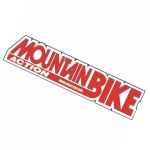HOW A BRAND EVOLVED FROM MAKING PIANOS TO EBIKES – THE YAMAHA STORY
The evolution of innovation

HOW A BRAND EVOLVED FROM MAKING PIANOS TO EBIKES – THE YAMAHA STORY
Torakusu Yamaha was born in 1851. His father was a low-level samurai and an astronomer. Torakusu was fascinated with technology. When he was 20 years old, he learned to repair watches, then began to study medical equipment. In 1886, Torakusu started repairing medical equipment for a living. Since there wasn’t enough business doing that alone, he repaired watches on the side and served as a rickshaw driver for a hospital director.
A local school principal asked Torakusu if he could fix their broken organ. He agreed to try. While taking it apart to find out what was wrong with it, he decided that he could build one himself. It took him two months to make one, and it was the first reed organ ever made in Japan.
Mr. Yamaha personally transported his new organ 160 miles and presented it to a university. The music professors told him it was badly conceived, and they talked him into studying music at the university for a month to understand what was wrong with it. Afterwards, Yamaha built his second organ in the final months of 1887. This time, the music professors told him that his second organ was as good as the ones that they bought from overseas. Mr. Yamaha soon got an order for seven more organs and had to start hiring people to help him make the organs.
In 1900, Yamaha built his first upright piano. Soon Yamaha’s pianos, organs and harmonicas were gaining fame all over the world for their quality.

THE MOVE TO MOTORCYCLES
Yamaha reveals on its website how the company started making motorcycles: “In 1950, Genichi Kawakami became Yamaha Corporation’s (then Nippon Gakki Co. Ltd’s) fourth president at 38 years old. During World War II, Yamaha Corporation manufactured wooden and metal propellers for airplanes and had also built an engine to test them. On November 7, 1953, Kawakami issued a highly confidential directive to the members of management to begin building a prototype motorcycle engine.
By 1954, work on the first prototype motorcycle was underway. Having to start from zero made it a very challenging project. The company’s first motorcycle was the YA-1 motorcycle (125cc, 2-stroke, single-cylinder street bike); it was nicknamed ‘Akatombo’ (the ‘Red Dragonfly’). It was completed and shipped on February 11, 1955. The brand-new YA-1 won the first two races it entered that year”.

CREATING A NEW BUSINESS
Yamaha Motor Company, Ltd. was founded in 1955 to separate the new business from the parent company. Yamaha Motor Company’s second motorcycle was a 175cc two-stroke model introduced in 1956. The next year, Yamaha began producing its first 250cc motorcycle.

Soon Yamaha motorcycles were proving that they could compete against the best bikes in the world. Much like Yamaha’s organ business, Yamaha Motors did not give up on its products easily. If anybody found fault with Yamaha’s products, the company figured out how to make them better until they came to be recognized as some of the best in the world.

“From the late 1970s,” Yamaha told us, “Yamaha Motors began looking for possible ways to address various societal issues in Japan—from problems in the energy sector, local environmental challenges, and traffic congestion to the country’s falling birthrate and rapidly aging population. We eventually turned our eyes to the bicycle and its advantages as one of the original means for greater personal mobility.”
“To retain the ease and convenience of a bicycle while effectively compensating for its inherent weaknesses, like difficulty going up slopes, into headwinds or riding with luggage, Yamaha developed a prototype personal commuter vehicle anyone could enjoy riding that used an electric motor to provide additional power proportional to the user’s own pedaling force.”

Photo courtesy of Yamaha
30 YEARS OF EBIKE PRODUCTION
In 1993, Yamaha developed its first electric bicycle. “It mounted the first iteration of our new signature Power Assist System (PAS),” Yamaha says, “in which an electric motor is used to provide an assistive force to the pedaling power of the rider in a manner that feels natural and in tune with human perceptions. Simply named the ‘PAS’ after its headline feature, the bicycle was hailed as the first of its kind in the world and enjoyed a successful market debut.”
Over the years, many additional changes were made to Yamaha’s ebikes, including a removable battery and a center-mounted drive unit.

In 2022, Yamaha came out with the YDX-Moro 07, which was designed to be a high-end electric-assist mountain bike. “It uses Yamaha’s Dual Twin frame design; the new, lighter and smaller PW-X3 drive unit; compact control switches; a minimalist display; and what Yamaha says are “top-shelf eMTB components to improve ride performance.”
Yamaha is a brand to keep an eye on, as they do everything they can to make their products the best in the world. That was the founding philosophy of its parent company over 100 years ago, and look where that has taken them.



